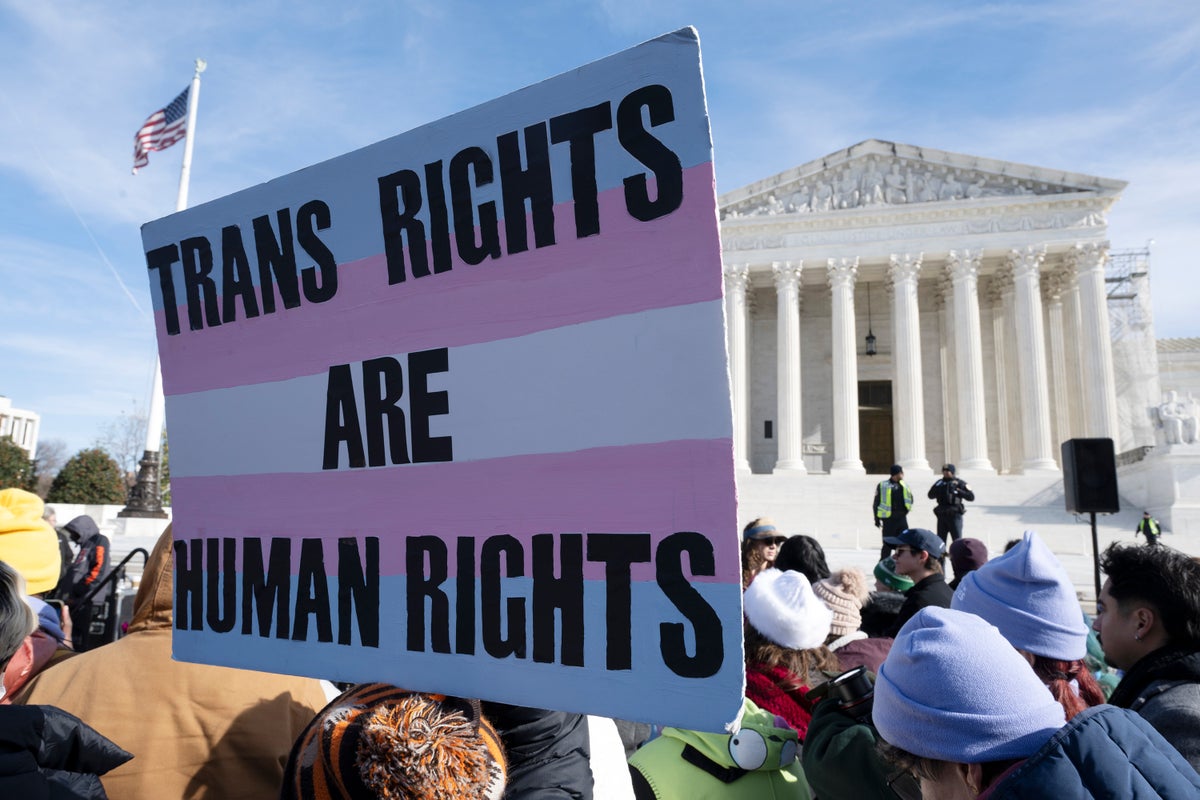How Supreme Court Trans Health Care Ruling Will Affect Kids
The Supreme Court has decided to uphold a state ban on gender-affirming care for minors in U.S. v. Skrmetti
Hundreds of trans people, activists and supporters rally outside of the Supreme Court of the United States in Washington, DC on December 04, 2024. Supreme Court of the United States hears the United States versus Skrmetti case.
The U.S. Supreme Court has upheld a Tennessee law banning gender-affirming care for minors in the case US v. Skrmetti. In a 6–3 decision by the conservative supermajority, the court ruled that the state law, called Senate Bill 1 (SB1), does not violate the Equal Protection Clause of the Constitution by discriminating on the basis of sex—despite the fact that the law forbids certain medical treatments for young people based on their assigned sex at birth.
The ruling is a major blow to transgender Americans’ rights and protections, which have been under attack at the state and federal level. The challenge to Tennessee’s SB1 had been brought by three transgender adolescents, their families and a doctor. “This might seem like a small issue to others but it affects my whole world,” wrote one of the plaintiffs, a then 12-year-old transgender boy, in a declaration submitted to the district court. “I’ve gone through a lot to finally get to the happy, healthy place where I am and I desperately hope that doesn’t all get taken away from me.”
If you’re enjoying this article, consider supporting our award-winning journalism by subscribing. By purchasing a subscription you are helping to ensure the future of impactful stories about the discoveries and ideas shaping our world today.
For anyone under the age of 18, SB1 banned medical treatments that aim to alleviate the symptoms of gender dysphoria—a feeling of misalignment between someone’s perceived gender and their assigned sex at birth. The law bans gender-affirming medical treatments, including puberty-blocking drugs and hormone therapies. There’s no evidence of serious negative effects of these medications, though long-term use of puberty blockers may limit the buildup of bone mineral density.
Research has shown that young people who experience gender dysphoria are at a high risk of depression and suicide. Those who receive care have better mental health outcomes, including decreased suicidal ideation, multiple studies have found. In contrast, between 2018 and 2022, when states enacted antitransgender laws, suicide attempts among transgender young people increased by as much as 72 percent. In the U.K., a ban on puberty blockers for transgender youth led to a sharp decline in mental health among this group, including increased depression, social isolation, and suicidal ideation, a recent study found.
In the Supreme Court’s majority decision, Chief Justice John Roberts pointed to “fierce scientific and policy debates about the safety, efficacy, and propriety” of the treatments. Many of those debates have largely been political, not scientific, however.
The Court was tasked with deciding whether the law constituted sex discrimination under the Equal Protection Clause and should thus be subject to a higher level of judicial scrutiny. Plaintiffs argued that SB1 prohibits established medical treatments for some people and allows them for others based on individuals’ assigned sex at birth. For example, in Tennessee, a teenager who had been assigned female at birth could not receive testosterone therapy, but a teenager who had been assigned male at birth could.
The Court’s decision means that Tennessee’s SB1 and any similar state laws do not merit heightened scrutiny from the judicial system to ensure they are appropriate. “This is unfortunate because the evidence base regarding gender-affirming care is overwhelming supportive of access to the care,” says Elana Redfield, a LGBTQ+ policy expert at the Williams Institute at the University of California, Los Angeles. “However, the legislature disregarded this evidence and relied instead on misinformation and conjecture when it passed the law—and, one can argue, bias against transgender people.”
Redfield notes that the case’s outcome doesn’t prevent states from passing laws to protect access to gender-affirming care—as 14 states and Washington, D. C., have chosen to do. She adds that the ruling also does not prevent future challenges to antitransgender laws from being brought before the Court on different grounds.
Lawrence Gostin, co-faculty director of the O’Neill Institute for National and Global Health Law at Georgetown University Law Center, has decried the Court’s decision. “It’s jaw-dropping to see a majority of Supreme Court justices turn a blind eye while transgender minors are flatly denied access to health services in consultation with their doctors,” Gostin said in a recent press release. “The Court is greenlighting red state laws that will deeply affect the lives of marginalized and victimized people seeking healthcare, social acceptance, and dignity. This decision paves the way for additional restrictions on other essential but politically fraught services, notably within sexual and reproductive health.”
Read More about the Case and Transgender-Affirming Care
Last December Scientific American spoke with health policy experts about what was at stake in the US v. Skrmetti case.
In January a study of 315 trans youth found that they had better emotional health after taking hormones.
See our answers to the questions “What Are Puberty Blockers, and How Do They Work?”
Explore “What the Science on Gender-Affirming Care for Transgender Kids Really Shows.”
IF YOU NEED HELP
If you or someone you know is struggling or having thoughts of suicide, help is available. Call or text the 988 Suicide & Crisis Lifeline at 988 or use the online Lifeline Chat.
Allison Parshall is an associate editor at Scientific American covering mind and brain. She writes the magazine’s Contributors column and weekly online Science Quizzes. As a multimedia journalist, she contributes to Scientific American‘s podcast Science Quickly. Parshall’s work has also appeared in Quanta Magazine and Inverse. She graduated from New York University’s Arthur L. Carter Journalism Institute with a master’s degree in science, health and environmental reporting. She has a bachelor’s degree in psychology from Georgetown University. Follow Parshall on X (formerly Twitter) @parshallison
Source: www.scientificamerican.com
